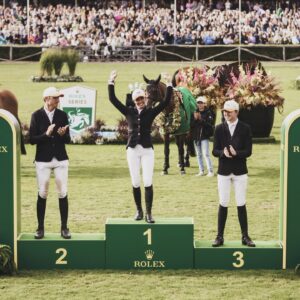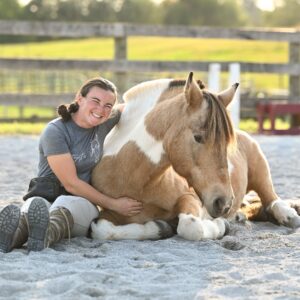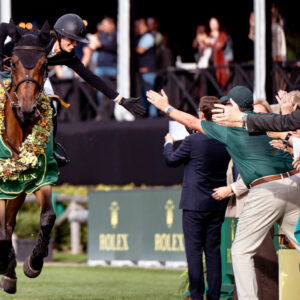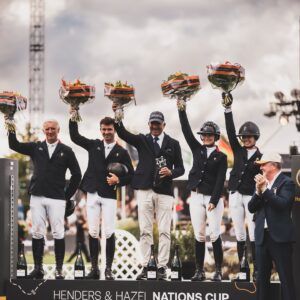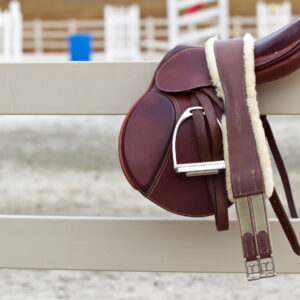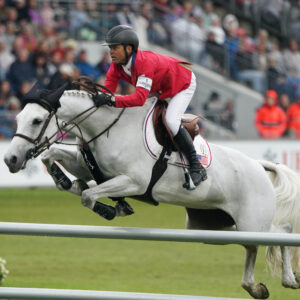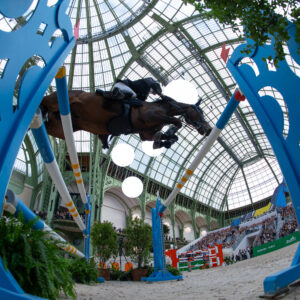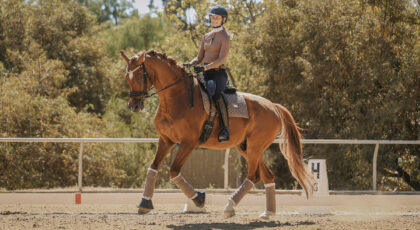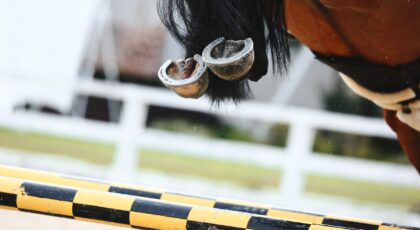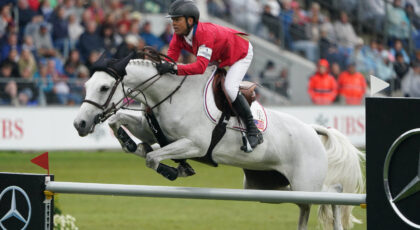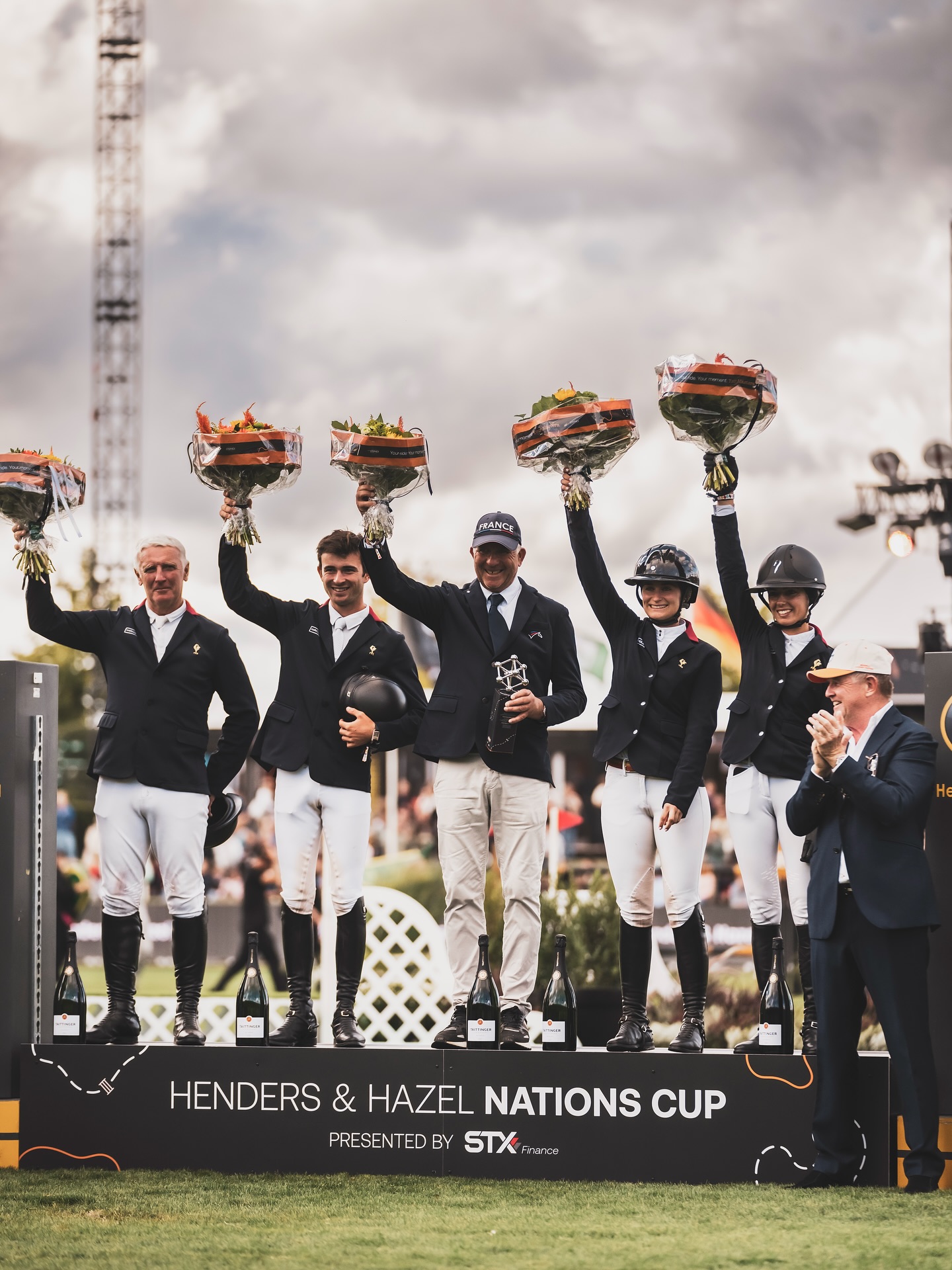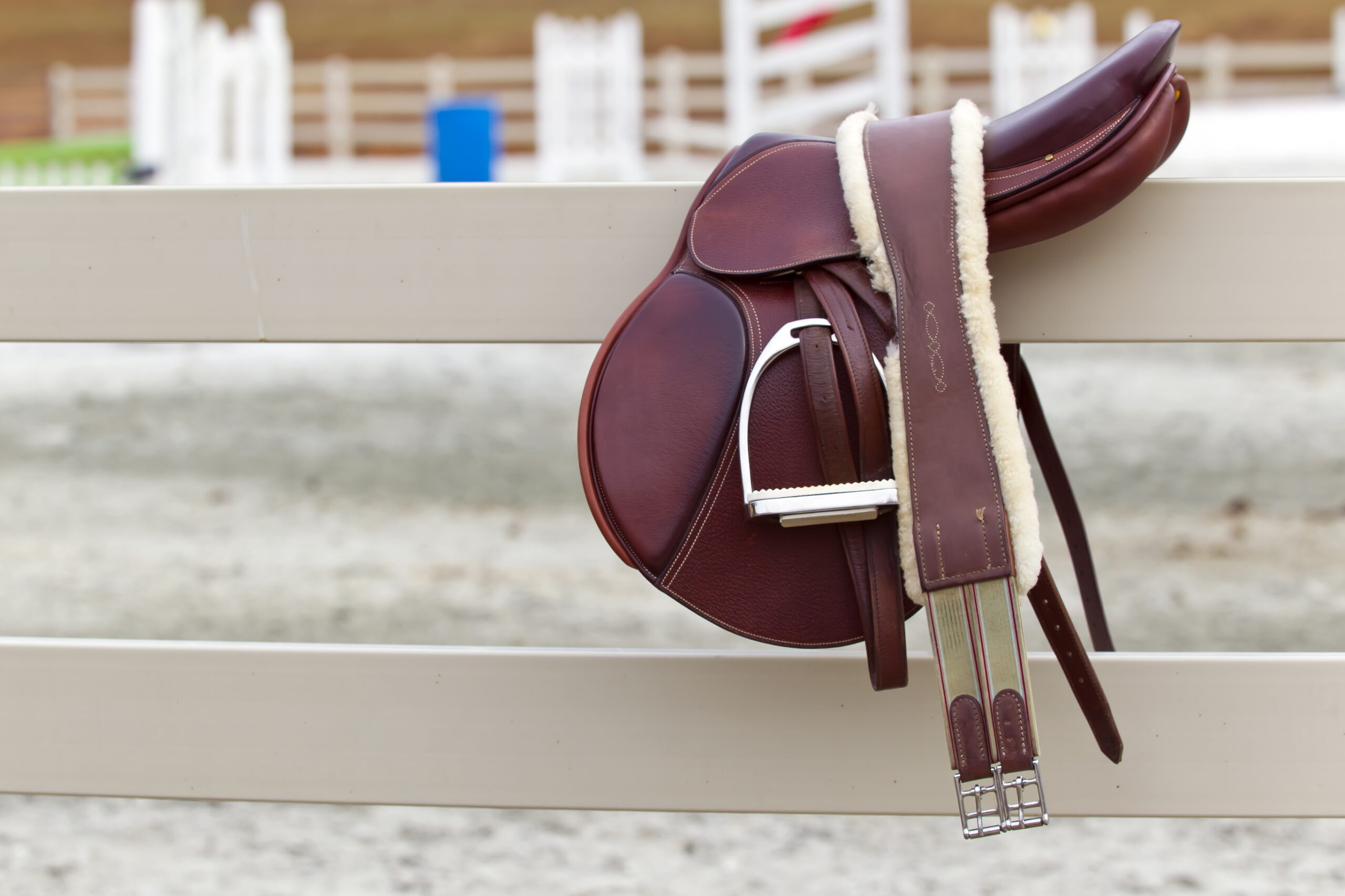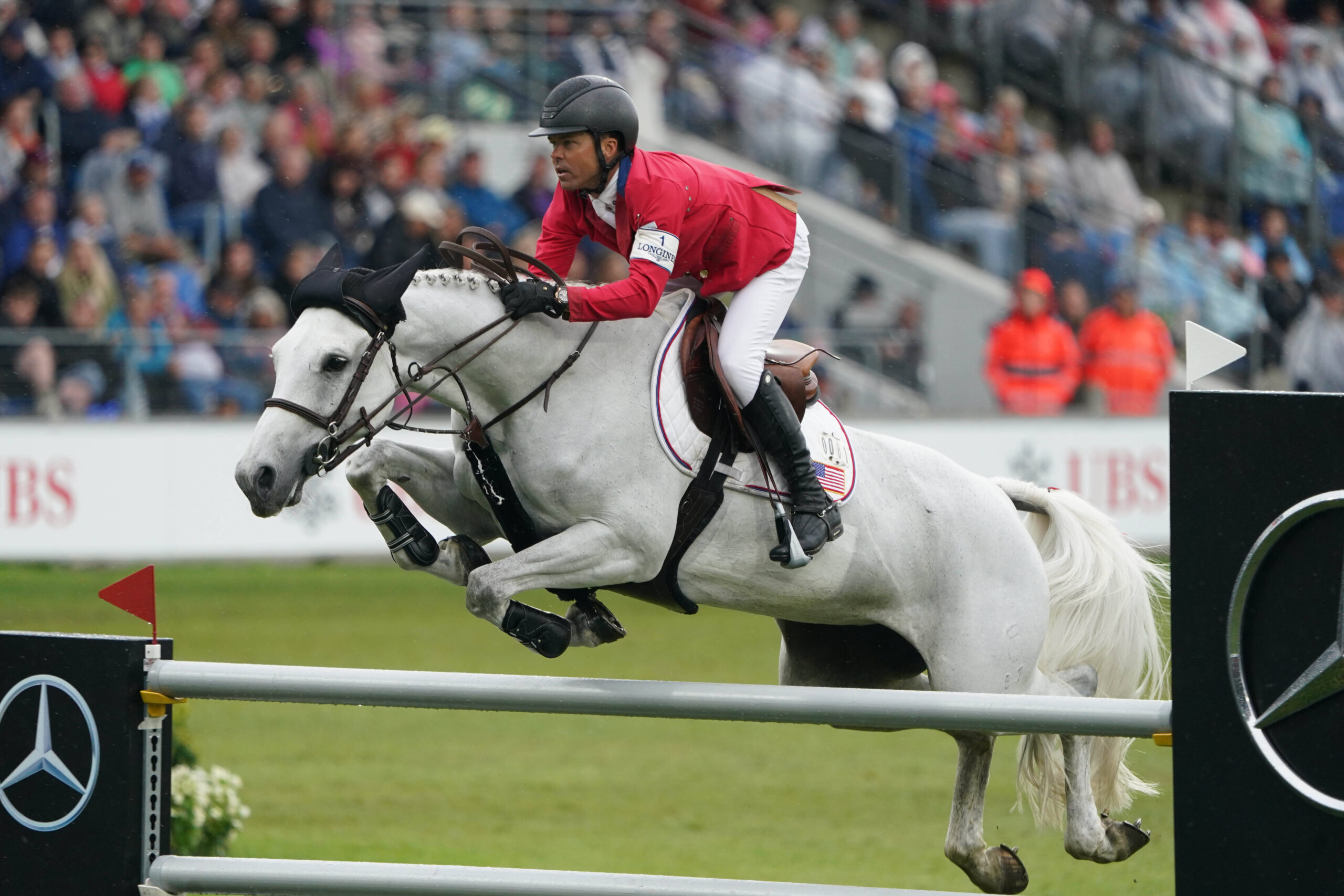Young horses are notorious for trotting clumsily into a canter.
It’s hard for them to balance the weight of a rider and still get all those feet in the right places to step into the gait gracefully. My three-year-old warmblood True is no exception.
He moves from the walk to the trot with an ugly little head lift that we’re eliminating gradually. But he moves from the trot to the canter like a spastic locomotive. In addition, his reluctance to move forward freely off my leg makes canter departs sticky.
In this post, we’ll work with the horse brain’s ability to make associations and strengthen them via non-edible reward. We also use the critical foundation for all lessons: Baby Steps! And we consider which method of cueing is best for the equine brain.
One problem with early canter departs is that the young horse doesn’t know what we want him to do. He thinks leg pressure means go faster—that’s what it meant in his past—so he trots faster even when we are pressing only with the outside leg. Soon we enter the Dark Side: that jarring, jolting, nerve-jangling, bone-rattling, tooth-loosening, sitting speed-trot. If you’ve ever tried to canter a baby for the first time, you know the one I mean!
There’s a lot to teach here, but horse brains demand that we work on one thing at a time. For now, True just needs to learn that one leg means canter. Here’s how to do that.
First, babies need plenty of experience cantering unmounted, but saddled and bridled, in a round pen or on a longe line. The movement of the saddle on True’s back and the stirrups against his side should not bother him.
Then, from a trot, I teach the word “canter” in the round pen, requiring him to move immediately into the gait each time I say the word. If necessary for the first few attempts, I alter my body position until it’s slightly behind the horse and raise the longe whip or direct it toward his hindquarters to encourage him to canter. When he does, I immediately reward with my voice and adopt my neutral position again.
After about once around, he gets a brief rest and some strokes along his neck and face, then we try again. After a week or two of calm daily work on this exercise, most young horses have learned to canter at no other cue than the word.
To review the preliminaries – before teaching a mounted canter depart, be sure the young horse knows:
- How to carry a saddle and bridle at all gaits comfortably
- How to carry a rider at a posting and sitting trot
- How to adjust sitting trot pace from slow to medium to fast and back
- How to pick up an unmounted canter from the word alone
Now it’s time to add a body to the equation.
I start teaching mounted canter departs in a small arena where there is little space for the horse to run off but enough for him to circle very comfortably. Remember, babies don’t turn corners or balance riders’ weight on a curve very well at first. I start from a slow or medium trot rather than a walk because it’s much easier and more natural for the young horse to do. But I don’t allow babies to speed-trot into the canter.
When True trots too fast as I am asking for a canter, I bring him back to a slow trot for 20 steps or so before cueing the canter again. In general, I allow perhaps 10 trot steps between my cue and his gait change. Anything more than that, and we start over.
(Exception: Get the first few canters any ole way you can, no matter how many jarring trot steps are involved. The horse has to try cantering before you can reward him. In turn, the reward tells him he is correct about what you want. After that, you can fiddle with the details.)
Which method of cueing the canter is best for the young equine brain? The simplest one that involves the fewest aids and is clearest to distinguish from cues for trot, walk, and whoa. Canter cues have become more and more complicated over the years for no good reason at all.
I’ve heard every excuse:
A horse cannot canter without simultaneous cues from both legs and at least one hand. Hogwash!
A horse has to be taught to move sideways off the leg before attempting a canter depart. Detrimental.
A horse cannot pick up a canter with his head straight. Say what?
A green horse should never be allowed to trot into a canter. Puh-leeze!
With a young green horse, keep cues simple and singular. This helps his brain make basic associations before moving on to more complex lessons. Leave both hands neutral while the horse is trotting straight ahead. Keep both legs neutral. Sit up straight. Sit the trot instead of posting. OK, you’re in “ready” mode.
Now, “get set”—lighten contact on both reins without leaning forward, then apply pressure with the outside leg just behind the girth or cinch. That’s it!
He won’t get it at first, but remember, he knows the word “canter” from the round pen. So this is the moment—with back vertical, contact very light or nonexistent, and pressure with the outside leg, that we add the word “canter.” You have to WANT this canter. Too often, riders are a bit hesitant—”Should I really canter this green spooky baby…? What if he gallops off…? Or bucks…?” The horse will sense reluctance, so be confident in your request.
When the baby does canter, praise, praise, praise with your voice! Rub his neck softly with your closed hand (still holding the rein). After he canters around a bit, bring him back to an easy walk, and praise and stroke some more. Make him know that he did exactly what you wanted. He just cracked a difficult code and needs to know what a great horse he is!
The first few weeks of canter departs aren’t pretty, but that’s OK. True’s been working on canter departs for months, and he still sticks sometimes. But he’s getting better—on one brilliant afternoon, he cantered from the walk!
Rome wasn’t built in a day. Eventually True will be able to canter from a halt, if his brain is allowed to connect the proper neural networks using baby steps, clear cues, consistent practice, and non-edible rewards.
Related reading:
- Chill Out in the Round Pen
- Working the Whoa
- Let’s Ride Already!
- Establish Pace Without Neural Fatigue
Brain-Based Horsemanship is a weekly column that chronicles Janet Jones, PhD, and her journey with True, a Dutch Warmblood she trained from age three using neuroscience best practices. Read more about brain-based training in Jones’ award winning book Horse Brain, Human Brain.
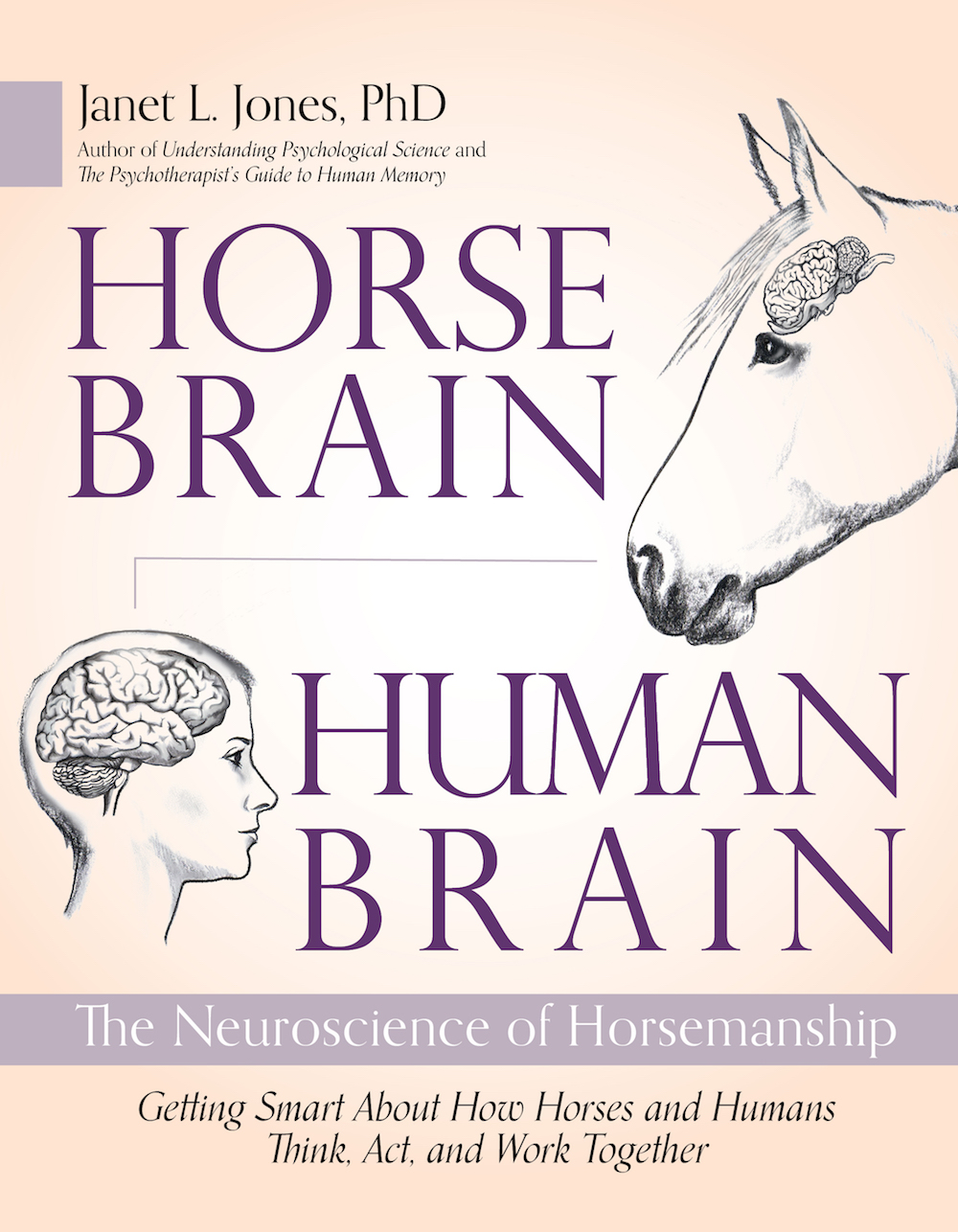
A version of this story originally appeared on janet-jones.com. It is reprinted here with permission.


 June 21, 2023
June 21, 2023 






